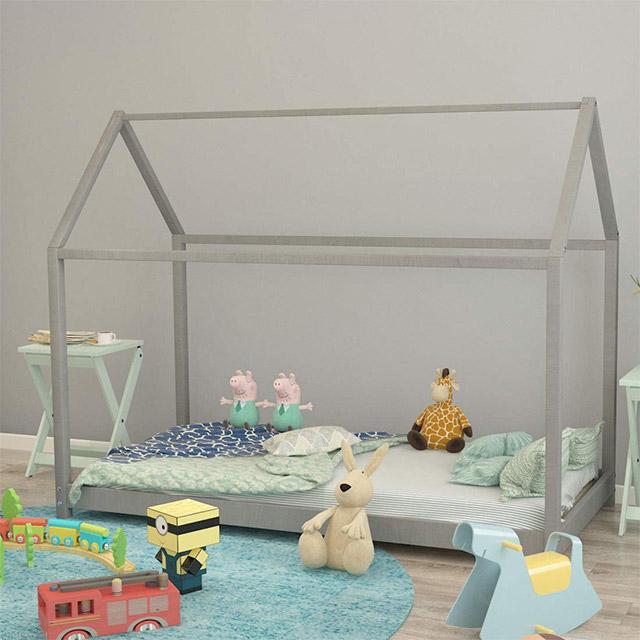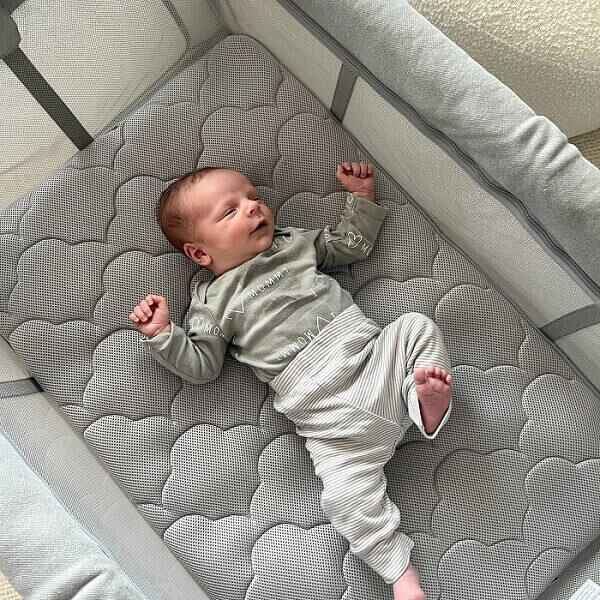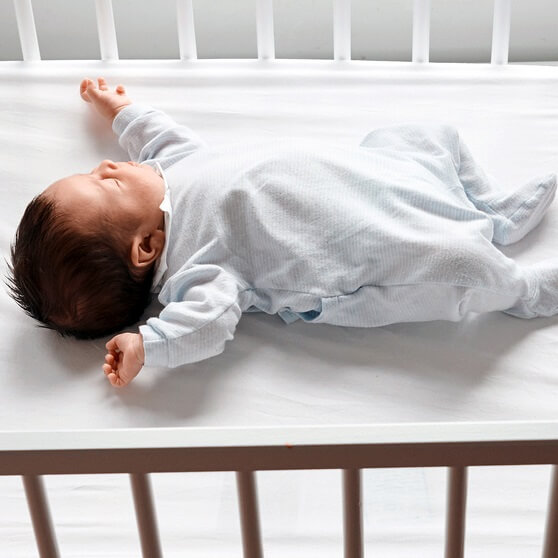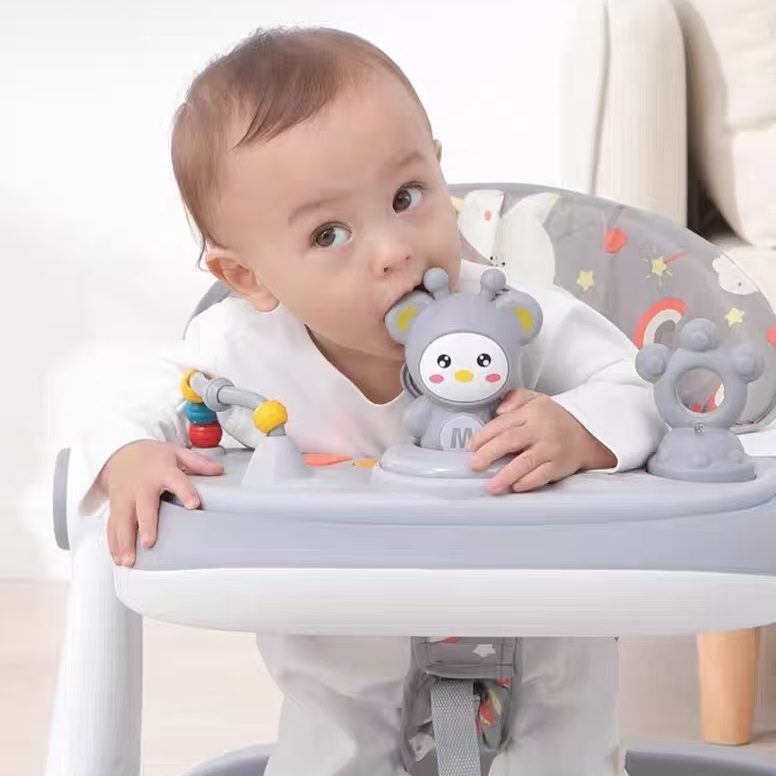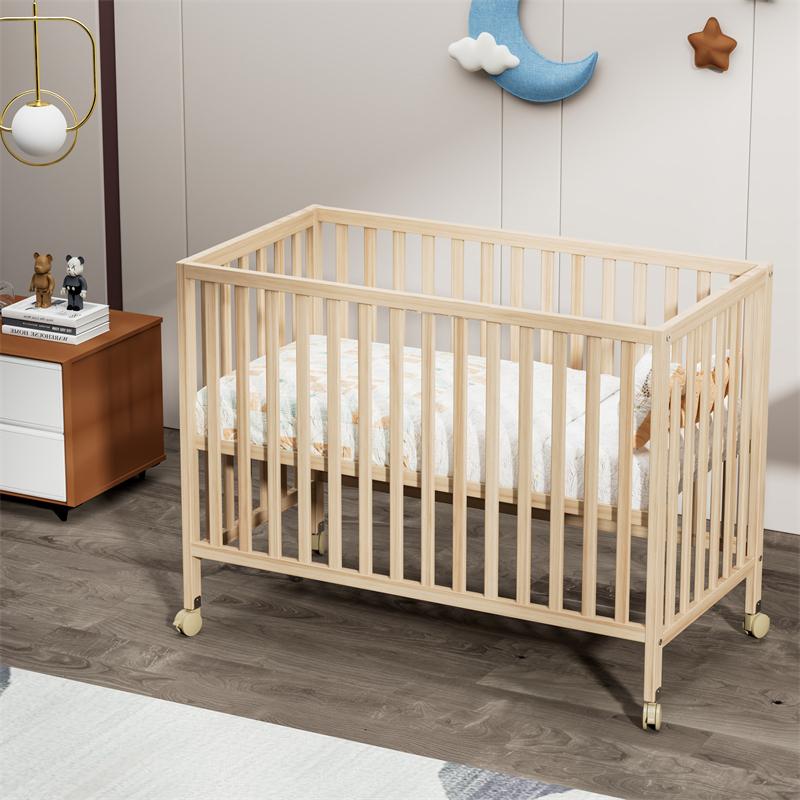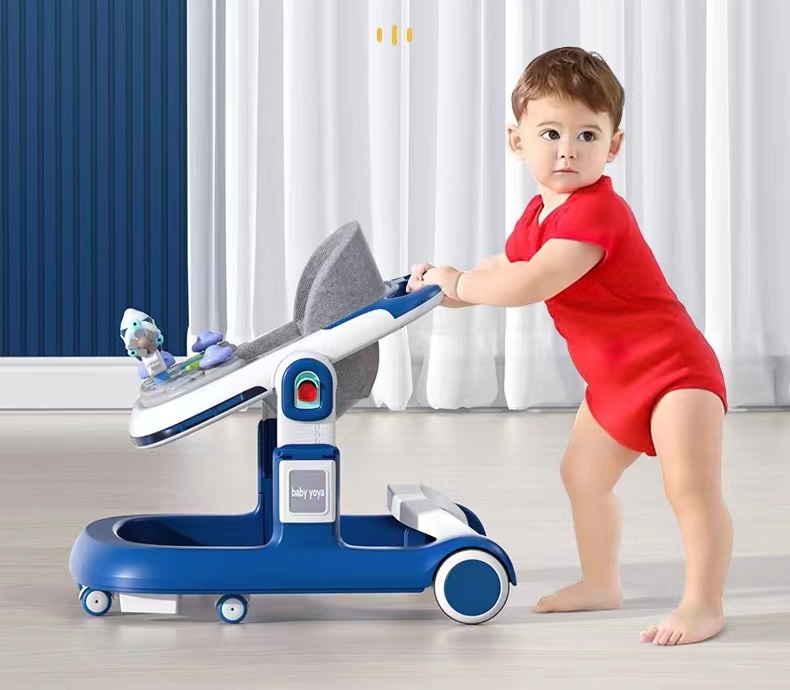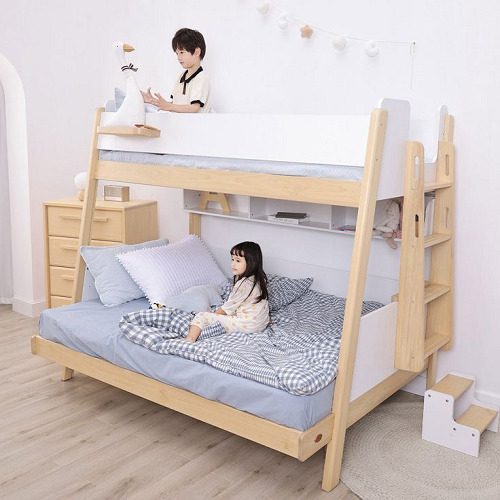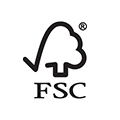As camas Montessorianas se tornaram bastante populares nos últimos anos. Quase todas as lojas infantis ou fabricante de móveis infantis os tem em seu catálogo e os promove como uma opção benéfica que vale a pena considerar.
Mas o que exatamente são camas Montessorianas? Quais benefícios elas oferecem? Elas são seguras? Quando você deve investir em uma e como escolher a certa? Bem, não se pergunte mais. Venha conosco enquanto respondemos a essas e outras perguntas pertinentes e desmistificamos as camas Montessorianas.
O que é o estilo de sono Montessori?
O conceito Montessori remonta ao século XX e foi liderado pela Dra. Maria Montessori. Começou como uma abordagem alternativa à educação infantil. Ele incentiva um currículo que se concentra mais nas necessidades das crianças, cultiva a independência e permite uma participação mais prática das crianças. Mais tarde, a Dra. Montessori expandiu o conceito por meio de pesquisas para abordar práticas de sono seguras e saudáveis.
Assim como a aprendizagem Montessori, o sono no estilo Montessori encoraja as crianças a serem independentes e curiosas para explorar, mas sob a segurança dos cuidados de adultos. Ele consegue isso por meio de seus princípios únicos:
- Autonomia: Por meio do sono independente das crianças em um espaço seguro.
- Camas de chão: elas tornam mais fácil e seguro para as crianças entrarem e saírem da cama de forma independente.
- Minimalismo: criando espaços convidativos e confortáveis para crianças pequenas dormirem sem bagunça.
- Autorregulação: permitir que as crianças durmam quando estão cansadas ajuda o corpo a desenvolver uma rotina de sono.
O conceito de camas de chão para crianças surgiu da pesquisa e recomendações da Dra. Maria. É por isso que agora são conhecidas como Camas Montessorianas.
O que é uma cama Montessori?
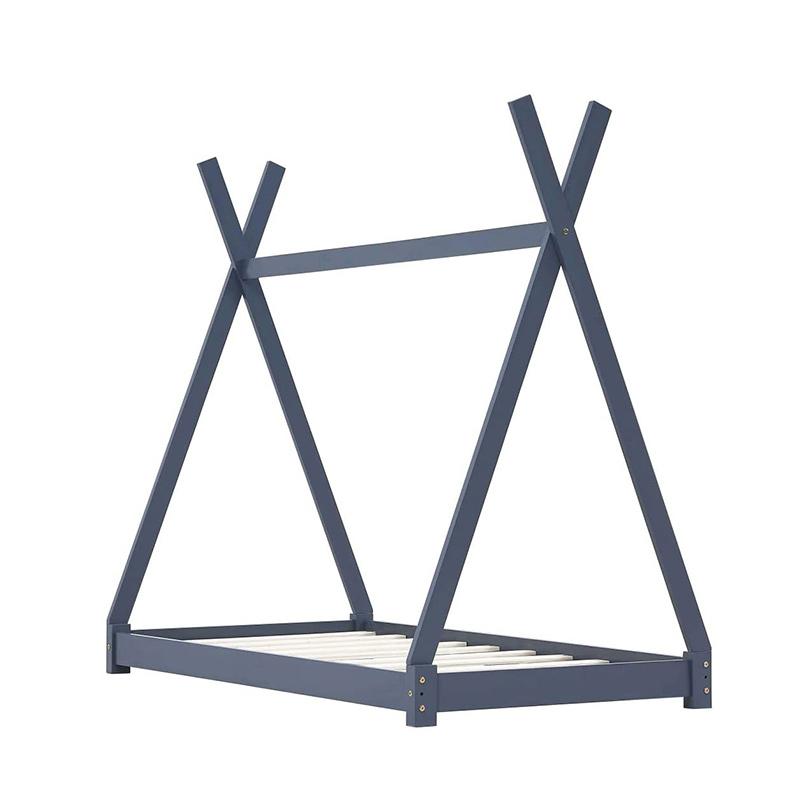
Uma cama Montessori é um design de cama para crianças pequenas inspirado nos princípios do sono Montessori. Os designs geralmente têm características comuns, como:
1. Proximidade do chão: Uma cama estilo Montessori fica rente ao chão ou tem uma elevação muito pequena do chão. A altura deve permitir que as crianças pequenas subam e desçam da cama sozinhas.
2. Sem restrições: As camas Montessorianas não têm grades nas laterais. Alternativamente, se houver grades, elas não devem ficar na lateral da cama que uma criança usaria para subir ou descer. Isso incentiva a livre movimentação. Grades também são bastante desnecessárias porque a baixa altura das camas Montessorianas não representa o risco de quedas prejudiciais.
Os detalhes do design, como o tamanho ou os aspectos decorativos da cama, podem diferir de um fabricante para outro. No entanto, esses dois conceitos principais são o que distingue uma cama estilo Montessori de outras camas para crianças ou berços.
Prós e contras da cama Montessori
Prós
Promovendo a Independência: A baixa altura das camas Montessorianas ajuda as crianças a aprenderem que podem subir e descer das camas quando precisam. Portanto, elas não precisam mais chorar porque se sentem presas em um berço quando acordam.
Liberdade de movimento: As crianças ficam ainda mais curiosas e ansiosas para explorar assim que conseguem engatinhar ou andar. As camas Montessorianas oferecem liberdade para que elas se movam em suas áreas de dormir com segurança. Elas funcionam particularmente bem se você executar o conceito completo de área de dormir Montessoriana, protegendo o quarto das crianças e mantendo-o livre de desordem.
Transições de sono mais calmas: As camas Montessorianas podem ajudar a fazer transições para dormir independente menos assustador para crianças pequenas. A facilidade de movimento tranquiliza a criança porque ela sabe que pode se levantar e vir até você sempre que precisar.
Risco mínimo: A proximidade das camas Montessorianas ao chão e a ausência de corrimãos restritivos eliminam esse risco e, em vez disso, incentivam explorações seguras.
Contras
O risco da liberdade desenfreada: É fácil para crianças pequenas acordarem e andarem pela casa se não houver limitações quando saírem da cama Montessori.
Padrões e locais de sono incomuns: Quando crianças pequenas descobrem sua liberdade, não é incomum que elas fiquem atrevidas com isso. Elas podem escolher acordar e brincar ao amanhecer e adormecer novamente pela manhã, quando é hora de continuar com o dia. Elas também podem adormecer em lugares estranhos, como sua área de recreação ou outras partes da casa, se vagarem.
Correntes de ar e alérgenos: Casas com portas elevadas trazem rajadas de ar frio que podem ser desconfortáveis para qualquer um que durma no nível do chão, muito menos para uma criança pequena. A proximidade das camas Montessorianas ao chão pode igualmente expor as crianças à poeira ou às fibras do carpete que causam alergia.
Para qual idade a cama Montessori é adequada?
Os princípios do sono Montessori não especificam a idade em que os pais devem fazer a transição das crianças pequenas de co-dormir, berços ou moisés para camas de chão. Isso não é surpreendente porque Abordagem do sono Montessori é tudo sobre flexibilidade razoável. No entanto, você pode tomar essa decisão com base no que você acha que é certo para seu filho e recomendações de especialistas em saúde.
Por exemplo, a Academia Americana de Pediatria não prioriza o tipo de cama que você deve escolher. Eles enfatizam o seguinte práticas de sono seguro em vez de:
- Um colchão firme e uniformemente plano
- Um lençol bem ajustado (para bebês)
- Sem roupa de cama extra solta ou brinquedos (para bebês)
- Coloque os bebês de costas durante o sono
- Não há travesseiros para crianças menores de 2 anos
Você e seu filho também podem aproveitar a segurança e os valores de desenvolvimento de uma cama de chão quando eles conseguirem engatinhar ou andar. É provavelmente por isso que a maioria dos pais começa a transição por volta dos 18 meses.
Uma cama Montessoriana é segura?
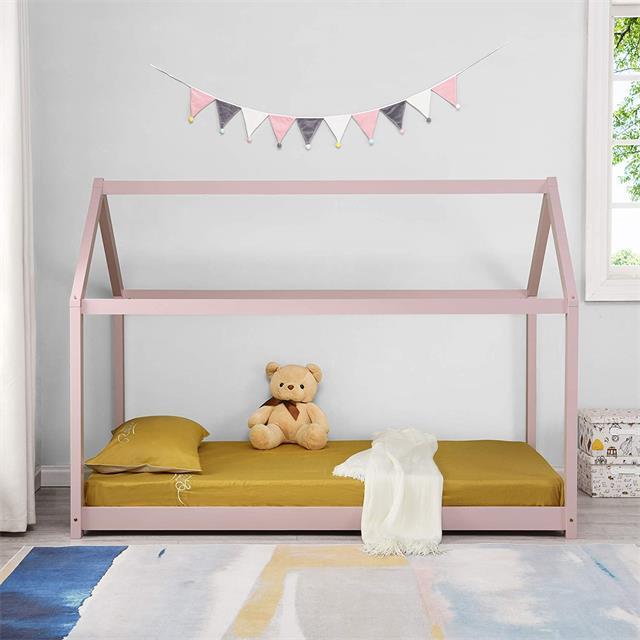
Sim.
Uma cama Montessori construída sem restrições e próxima ao chão é segura. Camas Montessori permitem que as crianças subam e desçam das camas sem o risco de ferimentos. Elas são indiscutivelmente mais seguras do que berços onde uma criança pode ficar presa ou machucada se tentar subir ou descer sem a ajuda de um cuidador.
Como pai ou cuidador, se a ideia de uma cama Montessori deixa você ansioso, você pode tomar medidas para tornar o espaço ainda mais seguro para seu filho. Vamos dar uma olhada em algumas dessas medidas, ok?
Use carpete de pelúcia
Colocar um tapete hipoalergênico perto de uma cama Montessori pode aliviar seus medos de quedas. Um tapete acolchoado ou razoavelmente grosso é ideal para isso, pois amortece a criança adequadamente. Certifique-se de que o tapete ou capachos usados sejam antiderrapantes para evitar riscos de tropeços. Prenda-os corretamente no chão para evitar qualquer movimento que possa fazer a criança tropeçar ou cair.
Executar medidas de proteção para crianças
Proteger o quarto contra crianças pode tornar o espaço mais seguro e minimizar o risco de liberdade irrestrita. Considere:
- Selagem de tomadas elétricas
- Removendo toda a desordem do espaço, incluindo fios e riscos de asfixia
- Permitindo apenas brinquedos seguros para crianças no quarto
- Incluindo apenas móveis mínimos e seguros para crianças no quarto
Considere adicionar grades de segurança (opcional)
Embora uma das características de uma cama Montessori seja que ela não tem grades restritivas. Se você acha que seu filho é muito novo para ser independente, considere uma cama com grades.
Alguns fabricantes entendem essa preocupação dos pais e dão aos consumidores muitas opções na hora de fabricar. Alguns estilos de cama Montessori vêm com grades removíveis, que geralmente podem ser instaladas temporariamente e removidas conforme a criança cresce e se torna mais confiante em seus movimentos. Se usar grades, considere usar grades macias ou acolchoadas para evitar superfícies duras perto da área de dormir. Essas grades devem ser altas o suficiente para evitar que as crianças rolem, mas baixas o suficiente para permitir que elas subam e saiam sozinhas.
Como escolher uma cama Montessori
Você encontrará uma ampla variedade de opções quando começar a comprar uma cama Montessori. A maioria dos designs também é tão atraente que você facilmente se deixa levar e se pergunta como fazer a escolha certa. Então, vamos discutir algumas dicas para ajudar a identificar a melhor cama Montessori para seu pequeno.
Use os princípios do sono Montessori
Há toneladas de camas de chão no mercado, mas nem todas são camas Montessori. Veja bem, uma cama tem que atender aos princípios do sono Montessori para se qualificar como uma cama Montessori. Então, procure uma cama de chão que tenha proximidade suficiente do chão para que uma criança possa subir ou descer sem ajuda. Ela também não deve ter barreiras ou grades envolventes; especialmente ao longo do lado de escalada, pois isso limitaria o movimento da criança.
Considere a aeração
Escolher uma cama Montessoriana com uma ligeira elevação do chão facilita a limpeza adequada do espaço e evita a formação de mofo sob o colchão.
Selecione materiais seguros e duráveis
As crianças brincam em suas camas o tempo todo. Portanto, é ideal escolher uma cama infantil feita com materiais resistentes e duráveis que possam suportar algumas sessões de quique. Procure materiais seguros também, como madeira que não lasque e acabamentos de tinta não tóxicos. Bordas arredondadas são igualmente importantes para evitar ferimentos por impacto.
Escolha o tamanho certo
Priorize camas Montessorianas que se encaixem no espaço que você tem em casa. Também é aconselhável escolher um tamanho de cama que seu filho possa aproveitar confortavelmente por alguns anos, diferente de uma que ele não vai mais usar quando estiver no pico de crescimento da criança.
Estilos de cama Montessori mais populares
Alguns estilos de cama Montessori são mais populares por causa de seus designs excepcionalmente belos e sua alta funcionalidade. Esses designs populares incluem:
Camas de chão Montessori
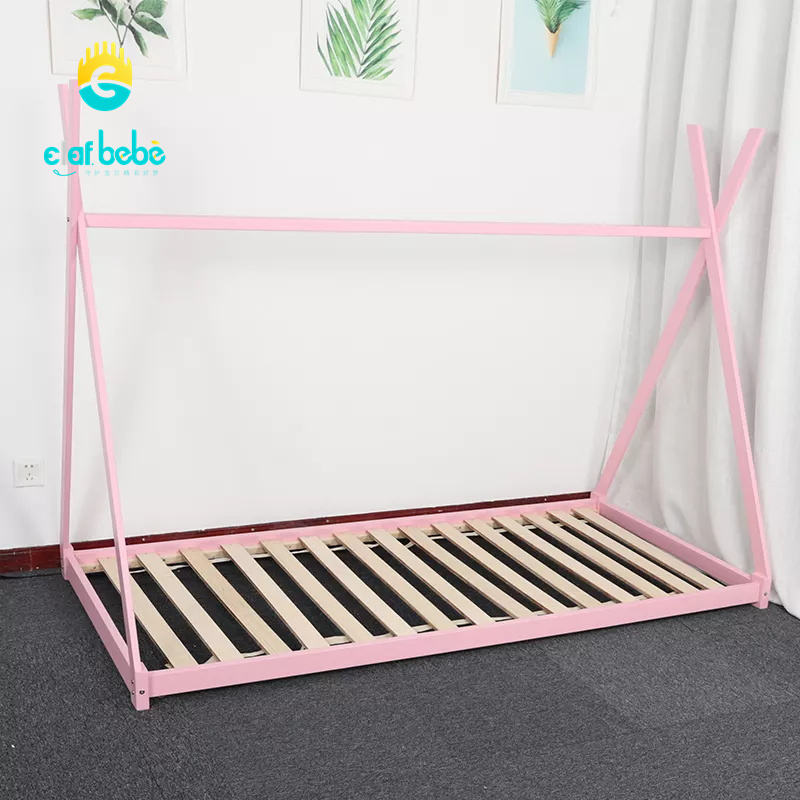
As camas de chão Montessori ficam niveladas com o chão de um quarto e podem ou não ter uma estrutura de cama. Elas são uma ótima escolha se você gostaria de um visual minimalista simples para a área de dormir do seu filho. Elas também não têm restrições de peso porque o chão suporta todo o peso; seu filho pode, portanto, aproveitar essa cama por mais tempo.
Camas Montessorianas
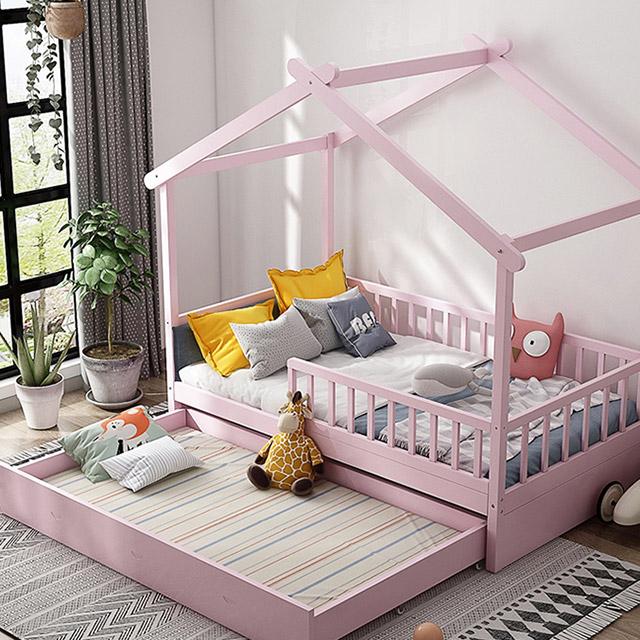
As camas de casa Montessori têm armações decorativas que lembram uma casa. O design normalmente inclui uma estrutura semelhante a um telhado e laterais abertas, criando um ambiente aconchegante, semelhante a uma casa de brinquedo, para a criança. As crianças gostam delas porque dão a grande sensação de possuir uma casa em vez de apenas um espaço para dormir. Elas podem decorá-las com brinquedos seguros para crianças, luzes de fada e outras adições à medida que envelhecem, o que torna o espaço ainda mais emocionante para elas.
Camas de dossel Montessori
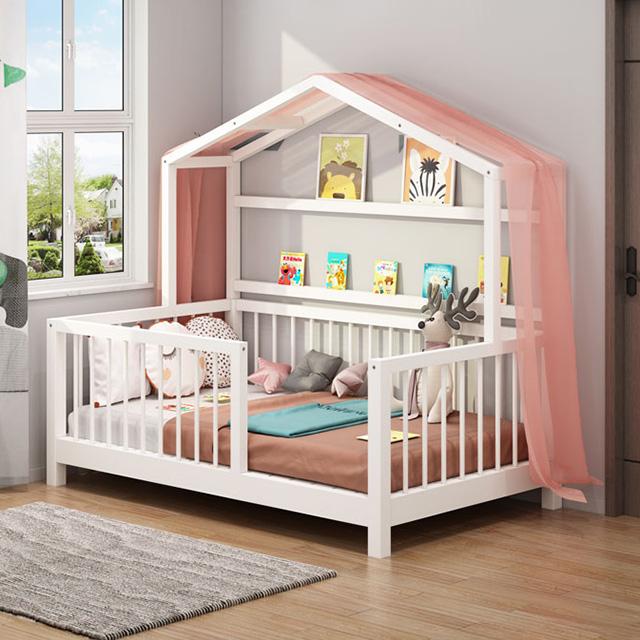
Uma cama de dossel Montessori tem uma estrutura suspensa que lembra uma casa. Você pode cobrir a estrutura com tecido decorativo para criar um dossel. O dossel pode ser feito de tecido, madeira ou outros materiais, criando um espaço protegido e íntimo para a criança, ou você pode solicitar ao fabricante da sua cama Montessori que personalize esse detalhe para você.
Assim como as camas de casa, as camas de dossel Montessori dão às crianças uma sensação de aventura e propriedade. Isso é ótimo para diversão, mas também ajuda a tornar a transição para o sono independente mais fácil.
Qual é o tamanho certo de colchão para uma cama Montessori?
O tamanho certo do colchão para uma cama Montessori depende do tamanho da cama Montessori.
Inicialmente, colchões do tamanho de berço medindo 28″ por 52″ ou colchões de solteiro medindo 38″ por 75″ eram as escolhas padrão para camas Montessori.
No entanto, os tamanhos e designs de cama Montessori variam bastante. Portanto, é melhor estabelecer o tamanho da cama Montessori que você escolher e, em seguida, selecionar um tamanho de colchão apropriado para ela. Independentemente do tamanho, o colchão deve ser firme, mas confortável para dar suporte à coluna em desenvolvimento da criança, e feito de materiais não tóxicos e respiráveis para se alinhar à ênfase Montessori em ambientes naturais e seguros para crianças.
Como criar um quarto no estilo Montessori para seu filho?
Como estabelecemos, a abordagem Montessori não se limita a investir em uma cama de chão. A cama apenas facilita as ideias Montessorianas de sono, que incluem promover a independência, a liberdade e o sono seguro. Criar um espaço para dormir que incorpore essas ideias é o que completa o círculo do estilo Montessori. Veja como fazer isso.
Itens que precisam ser preparados
| Mobília | Uma cama de chão Montessori Mesas e cadeiras baixas e adequadas para crianças para atividades |
| Ferramentas Organizacionais | Uma cesta ou caixa de luz para guardar brinquedos Prateleiras e gavetas acessíveis para crianças para livros, giz de cera, etc. |
| Materiais Educacionais e Lúdicos | Livros Papelaria para rabiscos e desenhos Lápis de cera e lápis de cor |
| Disposições de segurança | Luzes noturnas acessíveis ou ativadas por movimento Portão do quarto Um tapete de brincar Um tapete de cabeceira |
Guia passo a passo
1. Prepare a sala: Imagine o tipo de espaço para dormir que você gostaria de criar. Instale quaisquer elementos decorativos, como papel de parede ou piso especial, primeiro e dê tempo suficiente para arejar o ambiente. Instale os elementos de segurança, como tampas de tomada e o portão da porta do quarto. Retire todos os fios e a desordem do ambiente e depois limpe.
2. Instalar móveis: As camas Montessorianas costumam ser mais seguras se você as posicionar contra uma parede; isso deixa apenas um lado para a criança subir ou descer da cama, apresentando, portanto, um risco menor. Coloque o tapete de cabeceira ao longo do lado de escalada. Configure a área de recreação com os móveis, brinquedos e itens essenciais para atividades do outro lado do quarto. Isso separa as zonas de dormir e brincar.
3. Decore o ambiente: Escolha tons neutros e calmantes para as paredes e móveis para criar um ambiente tranquilo. Evite cores muito brilhantes ou estimulantes. Pendure obras de arte ou fotografias no nível dos olhos do seu filho, permitindo que ele aprecie e se envolva com os visuais. Maximize a luz natural no ambiente. Use cortinas transparentes para suavizar a luz, fazendo com que o espaço pareça claro e arejado.
4. Incorpore atividades de vida prática: Monte um pequeno espelho com uma escova, pente e lenços de papel. Isso incentiva o autocuidado e a responsabilidade pessoal. Forneça ferramentas de limpeza do tamanho de uma criança, como uma vassoura, pá de lixo ou pano, permitindo que seu filho ajude a arrumar.
5. Realize uma verificação de segurança:
- Verifique suas instalações de segurança para garantir que elas funcionem corretamente.
- Mantenha tudo o que a criança precisa ao alcance dela para garantir a segurança.
- Qualquer coisa que você notar que eles não precisam é supérfluo e é melhor removê-la do cômodo.
Conclusão
A abordagem Montessori para a criação de filhos pode parecer assustadora porque dá muita liberdade às crianças. A verdade, no entanto, é que essa liberdade lhes dá um espaço seguro para aprender e é muito mais saudável do que a criação de filhos helicóptero. Então, se você está avaliando opções sobre a transição para camas Montessori, vá em frente e experimente. As dicas de segurança neste blog ajudarão você a fazer isso corretamente.
Por outro lado, se você está se perguntando se deve ou não ter camas Montessorianas em sua loja, a resposta é sim.
Clafbebe é um conhecido fabricante de camas Montessori na China, produzindo camas Montessorianas que excedem os padrões internacionais de qualidade e segurança. Sua segurança e apelo certamente permanecerão em demanda pelos próximos anos. Contate-nos para detalhes sobre nossas coleções e um orçamento a qualquer momento.
Artigos relacionados recomendados:


